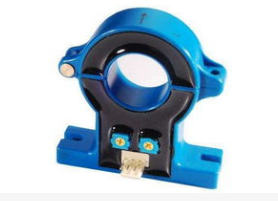What are the applications of Hall effect sensors?
The Hall effect is a type of electromagnetic effect. When a current passes through a conductor in a magnetic field, the magnetic field generates a force in the direction of the electrons in the conductor that is perpendicular to the direction of the electron's movement, thus perpendicular to the conductor and the magnetic induction. A potential difference occurs in both directions of the line. With the continuous improvement of technology, Hall effect-based sensors have made significant progress in material technology. Hall effect sensors can be widely used in power systems as on / off sensors or linear sensors.

Application of SS461C Hall Effect Sensor in Automotive
With the development of electronic technology, the degree of electronicization of automobiles is getting higher and higher. A good car control system can improve the adhesion between the wheels and the ground, thereby improving the safety, power and comfort of the car. The sensor is the core device in electronic technology and a device for signal conversion. Its function is to convert the measured non-electrical signal into an electric signal. It is a key device to promote the comprehensive development of automotive technology. In the automotive chassis electronic control system, the control work is inseparable from the sensor, and the speed sensor plays a major role in the vehicle control system.
The SS461C Hall-effect sensor is used in speed sensors to detect the rotation of the crankshaft of a car or truck. SS461C Hall-effect sensor can meet the requirements of high precision and adopt digital current sink output, which can provide high output current and high-speed response capability
Application of Hall sensor in brushless DC motor
The torque in a DC motor is generated by the interaction of the permanent magnet magnetic field and the current in the winding. In a brushed motor, the commutator switches the armature current and the appropriate magnetic field by switching the armature winding. In brushless DC motors, the Hall position sensor detects the position of the rotor's rotating magnetic field and excites the corresponding windings through logic and drive circuits. In general, the windings respond to the magnetic field of the motor's permanent magnets to produce the required torque.
The user can make a reasonable choice according to the installation requirements (ie the direction of the rotor magnetic field) and the induction direction of the Hall sensor. Honeywell SS30, SS31x / SS41x, and SS36x / SS46x series Hall-effect sensors provide the precise motor shaft position data required for brushless DC motors.
Application area
Hall-effect position integrated circuits can be used in a variety of potential applications, such as portable medical equipment (renal dialysis pumps, blood processing equipment, infusion pumps), aircraft ventilators, and marine submersible motors.
If you want to know more, our website has product specifications for the Hall effect sensors, you can go to ALLICDATA ELECTRONICS LIMITED to get more information

